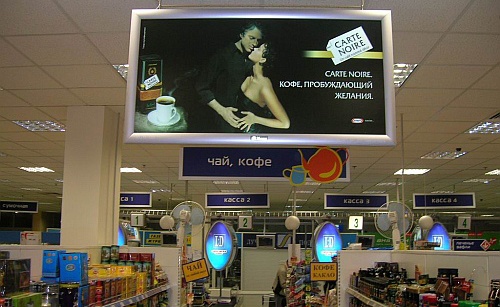Publicity on the POS
Publicity on the POS allows stores to increase sales with a small initial investment and consists in communicating directly on the Point of Sale where the consumer purchases items. This publicity touches a qualified target in a state of “consent”, since it is intellectually ready to spend money.
Publicity on the POS exists in different forms:
- Visual: Animation stalls, boxes, signage, screens broadcasting publicity spots, interactive tactile screens, window stickers, video projector, stands…
- Sound: Promotional announcements, music, news…
- Olfactory: Scent…
Key factors of success
The publicity has the task of making the product attractive. Sight is the sense that is most used in the POS, getting good publicity in this environment is thus a real challenge. The colours and forms that are used are important elements to boost the product.
The publicity has to provide useful information. If it has to be attractive, a good POS display has to provide the right information about the product it promotes: advantages, characteristics and specificities have to be underlined.
The POs displays have to generate sales. They have to encourage the clients’ purchases and in this they are good tools to use.
POS display market tendencies
The year 2012 has seen a «substantial decrease in the usage of plastics and a strong progression of digital media used alone or integrated with POS publicity». (Source POPAi and the Harris Interactive institute, 2013) Another interesting point of the study is that the decision of purchasing in the store, was 70% in 1995, and has now gone to 76% in 2012. The POS thus stimulates compulsive purchases thanks to a useful and innovative in-store communication. Contrary to preconceived notions, the compulsive purchase does not result only from the creation of a need, but also from the awakening of a memory that the store causes (vis à vis a need expressed by the consumer in the past.)
Store managers now have less and less time to make sure that the impact of their messages is the one they wish, and does in fact encourage purchases. The time spent in the store has considerably decreased in the last 20 years, yet paradoxically, nearly 50% of all purchases are decided in the store. The problem is being resolved thank to the arrival of the digital world, which increases the impact of publicity messages and attracts attention substantially more than traditional POS publicity. Extra proof (if it’s even needed) of the impact that in-store communication can have, is that more than one purchase out of six is done when a POS display has been put in place in the store!
You have a digital signage project, ask for a free demo.
